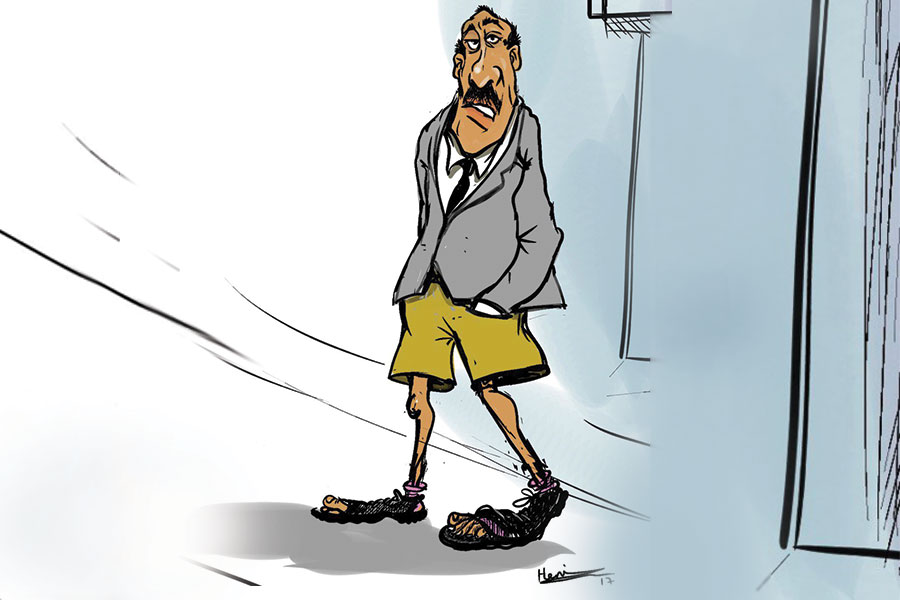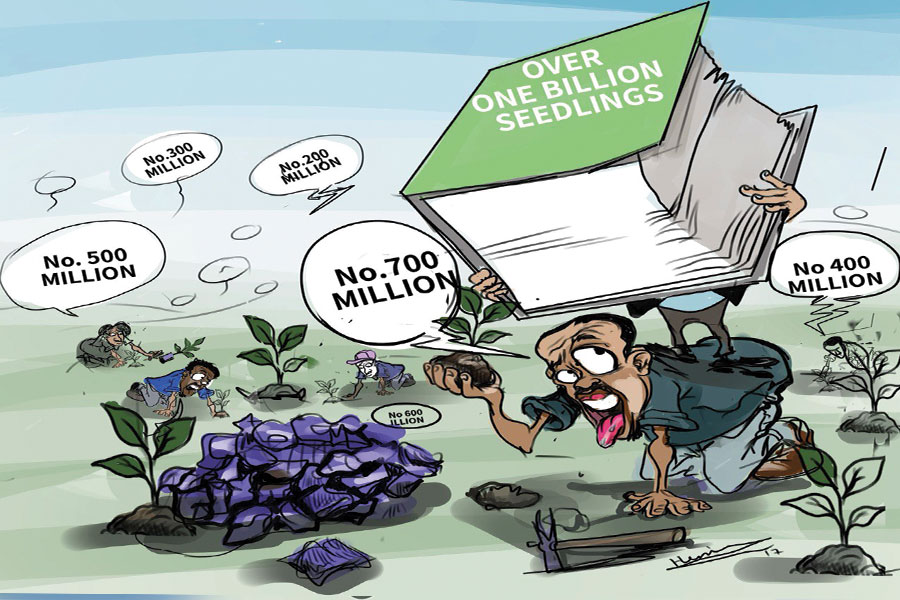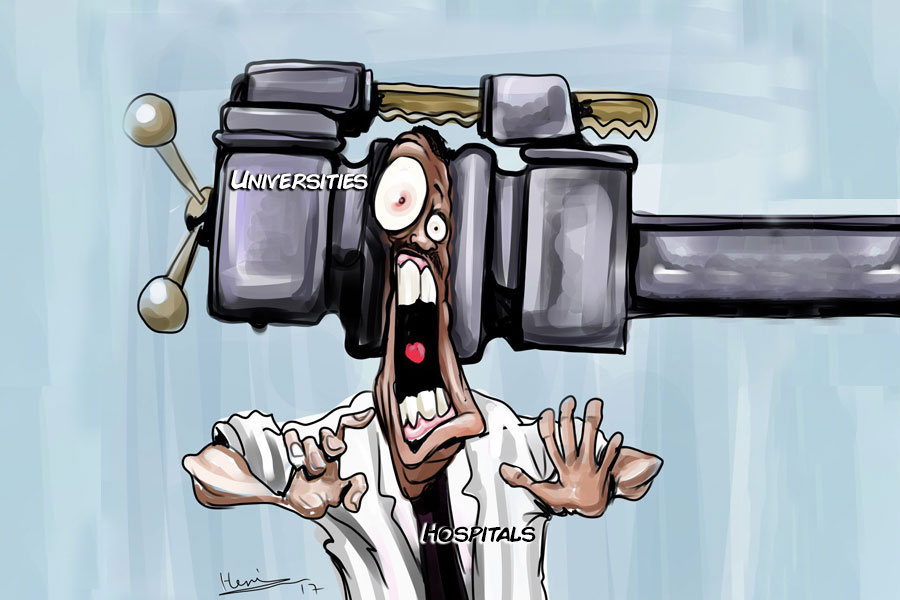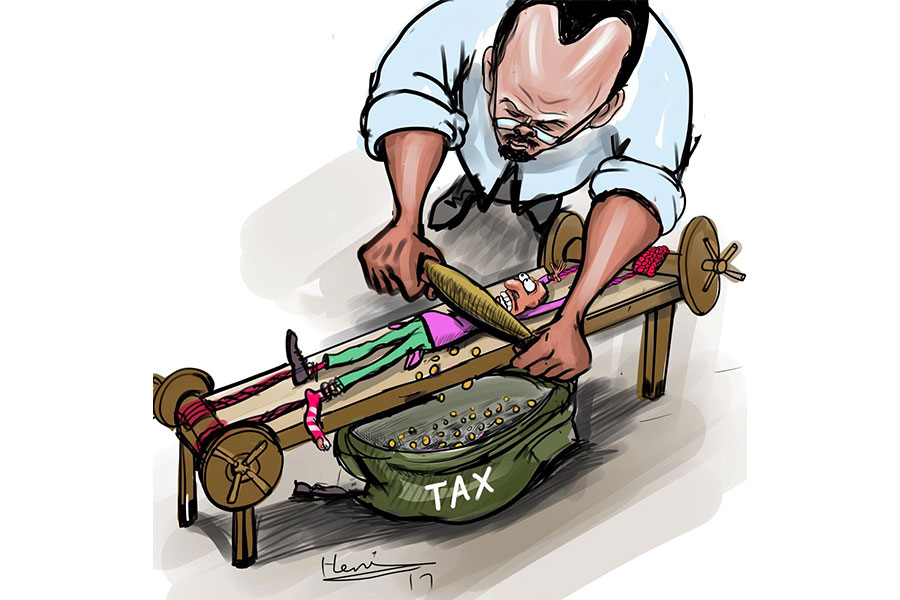
My Opinion | 133429 Views | Aug 14,2021
Jun 14 , 2025. By Kidist Yidnekachew ( Kidist Yidnekachew is interested in art, human nature and behaviour. She has studied psychology, journalism and communications and can be reached at (kaymina21@gmail.com) )
On multiple occasions, I have found myself watching the garbage collectors on their morning route, a subtle unease settling in. There is a somber reality to their work, a reminder that in a world of vast opportunity, some find their roles confined to clearing away what others discard. It is the kind of observation that opens a corridor of reflection on the infrastructures that quietly shape daily life: the destinations of waste, the hidden labour behind sanitation, and the silent burdens borne by those who manage society’s refuse.
Amid such contemplation, an odd yet telling detail stands out. The neighborhood dogs, vocal and insistent, seem to have formed strong opinions about these workers.
Modern life runs on the rails of convenience. Items are consumed, discarded, and forgotten with the ease of a flicked switch. Yet behind that ease lies a chain of human effort, rarely seen and less frequently acknowledged. The question of where waste goes after being cast aside leads inevitably to those who shoulder its burden.
Sanitation workers, often noticed only in passing and announced by the hum of machinery at dawn, endure conditions that many would find intolerable. There is the stench that clings to their uniforms, the strain of lifting overflowing bins, and the dispiriting task of sorting through others’ carelessness. The toll, physical and psychological, is significant. Research consistently points to elevated health risks in this line of work, worsened by social stigma that renders their labor invisible even as it undergirds everyday life.
This aversion to engaging with waste continues in subtler ways. The journey of what disappears down the toilet, for instance, remains largely unexplored in public consciousness. Even beneficial innovations like wastewater treatment or biogas energy generation evoke discomfort. Such reactions stem not from science, but from a deep-seated reluctance to confront the less polished parts of human existence. Waste. literal and symbolic, is meant to be removed, not reflected upon.
And yet, in the midst of this reflection, another small phenomenon arises; the barking of dogs. It may seem trivial, even amusing, but it hints at something more. Certain individuals, often those in uniforms or covered in the markers of manual labor, receive disproportionate attention from neighborhood pets. Mechanics, delivery personnel, sanitation workers, these figures often elicit a full-throated canine response, while a sharply dressed passerby might be ignored altogether.
This is not a simple case of canine discrimination, but rather a complex interplay of a dog’s highly attuned senses and their deep-seated instincts.
Dogs observe the world with an intensity unfamiliar to human perception. Their world is a rich tapestry of scents, sounds, and subtle visual cues that often go unnoticed by our comparatively dull senses. Their reactions stem from an intricate web of visual cues, scents, and daily routines. A garbage collector who appears regularly but never enters the home disrupts the ordinary, triggering territorial instincts. Uniforms, too, become signifiers of the unfamiliar, a coded alert for the hyper-vigilant senses of a dog.
Smell plays an even greater role. Sanitation workers carry with them traces from dozens, even hundreds, of locations. To a dog, this invisible trail transforms the worker into an intrusion, a walking collection of foreign signals. It is not judgment, only instinct.
And beneath it all lies the emotional radar of dogs, finely tuned to the states of those around them. A person anxious around dogs may move stiffly or emit stress through body language and scent. That, in turn, heightens a dog’s alertness, sparking a loop of mutual suspicion. Calm, grounded presence often disarms this cycle, met not with barks but with curiosity or even friendliness.
In the orchestration of these morning moments, the arrival of the waste truck, the ripple of canine reaction, the retreat into routine, there’s a window into the systems that order the world and the instincts that respond to them. Beneath the noise, a deeper story unfolds: one of invisible labor, unspoken hierarchies, and the strange wisdom of animals. It is in such ordinary scenes that a society reveals itself, offering, to those willing to observe, a quiet education in empathy and attention.
PUBLISHED ON
Jun 14,2025 [ VOL
26 , NO
1311]

My Opinion | 133429 Views | Aug 14,2021

My Opinion | 129943 Views | Aug 21,2021

My Opinion | 127749 Views | Sep 10,2021

My Opinion | 125303 Views | Aug 07,2021

Aug 9 , 2025
In the 14th Century, the Egyptian scholar Ibn Khaldun drew a neat curve in the sand....

Aug 2 , 2025
At daybreak on Thursday last week, July 31, 2025, hundreds of thousands of Ethiop...

Jul 26 , 2025
Teaching hospitals everywhere juggle three jobs at once: teaching, curing, and discov...

Jul 19 , 2025
Parliament is no stranger to frantic bursts of productivity. Even so, the vote last w...